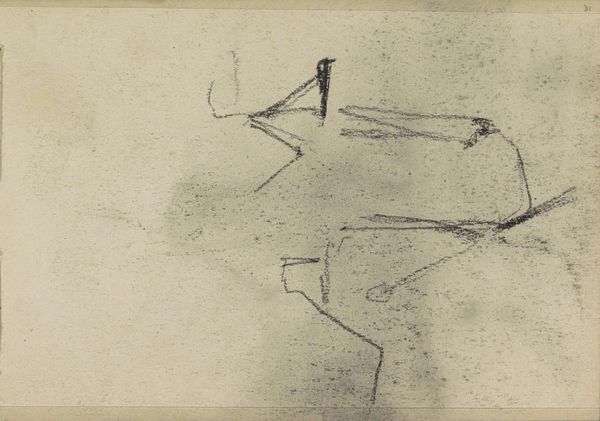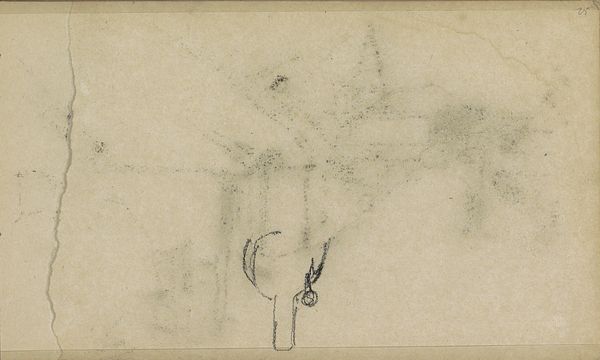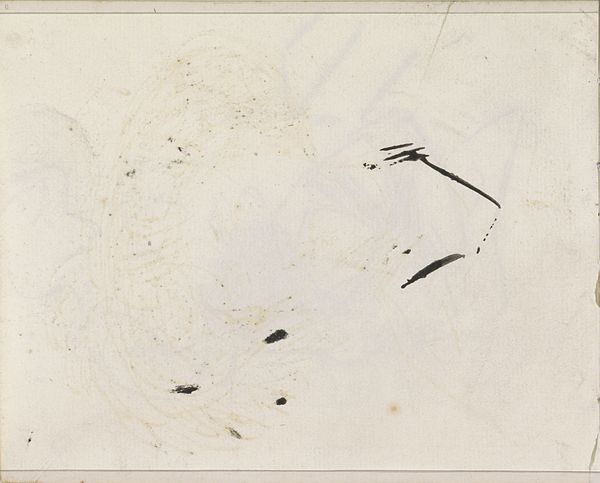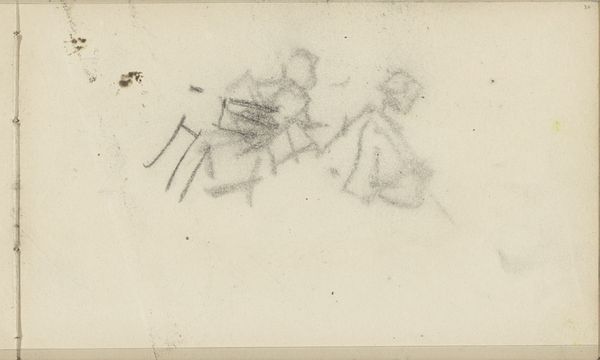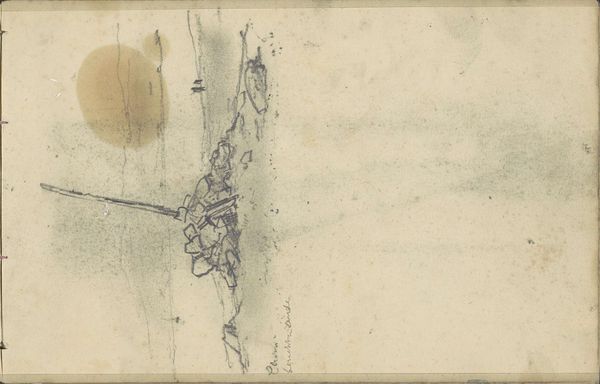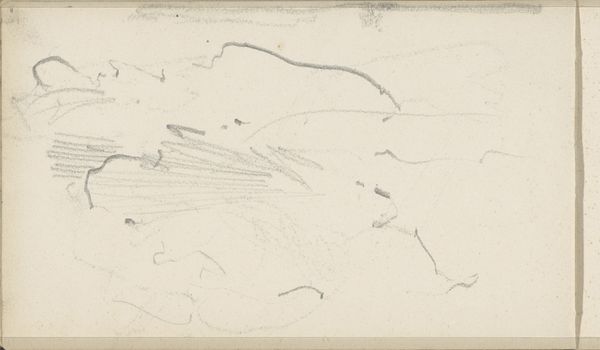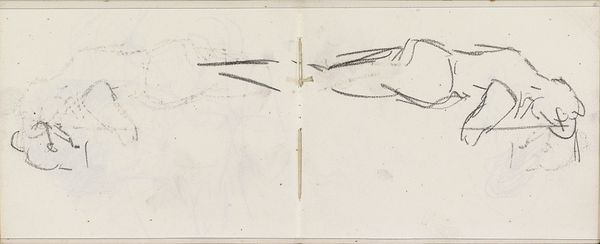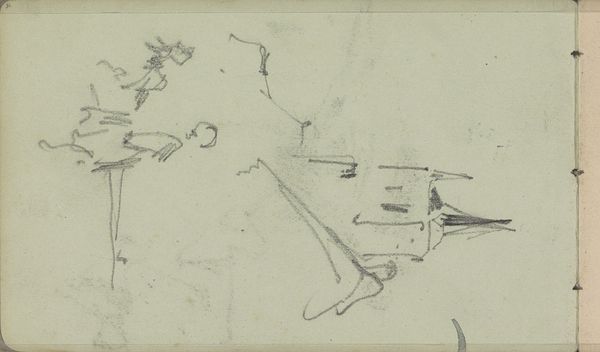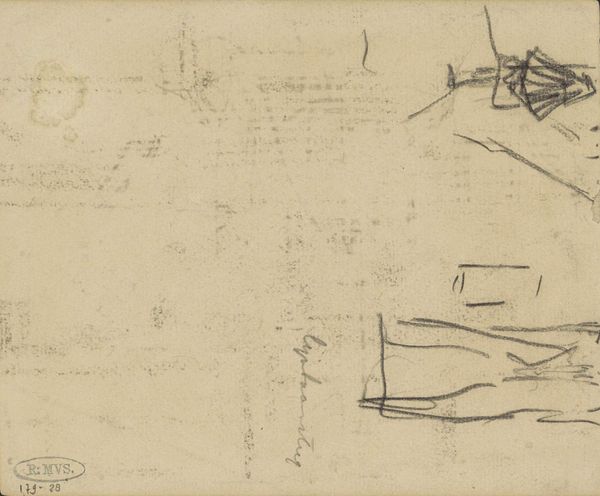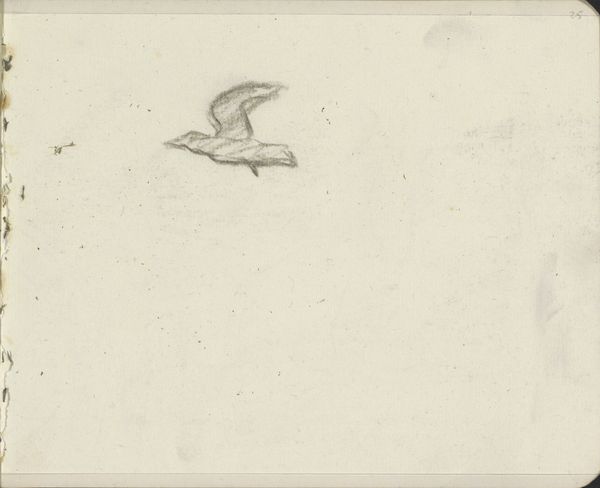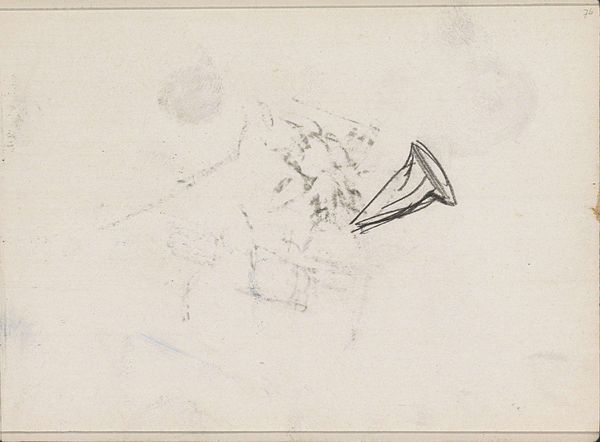
#
amateur sketch
#
toned paper
#
light pencil work
#
pencil sketch
#
incomplete sketchy
#
possibly oil pastel
#
fading type
#
underpainting
#
sketchbook art
#
watercolor
#
profile
Copyright: Rijks Museum: Open Domain
Editor: This is "Lopende man, in profiel," or "Running Man, in Profile," by Isaac Israels, created sometime between 1875 and 1934. It's a pencil sketch on what looks like toned paper. It feels very immediate, like a fleeting impression, capturing the essence of movement with so few lines. What do you see in this piece? Curator: Indeed, the minimal quality of line is quite striking. Notice the application of line weights: thick and somewhat clumsy hatching on the forward angled marks balanced with a tentative angular tracing of a human. These competing and conflicting marks create an interplay that establishes visual tension. One reads it and perhaps *feels* as incomplete – a generative fragment on toned paper. What thoughts might you ascribe to the use of profile? Editor: That's interesting. I hadn't considered the profile view so carefully. Does the use of a profile suggest objectivity or distance? I wonder what he's running from? The quickness of the drawing makes me think it had to be spontaneous, not a posed portrait. Curator: Precisely! Consider the application of the fading or fading type in the area that seemingly should express "ground." Notice too that its "unfinished" or incomplete qualities invite multiple readings. The profile, combined with the starkness of the lines, foregrounds the body's geometry. What purpose might that composition suggest? Editor: The incompleteness and basic rendering definitely pushes the viewer to see the man as a form in motion, rather than a person, especially given its dynamism that verges on being cartoon-ish. It makes me appreciate how much information a simple line can convey, it is like it only contains minimal instructions of human-ness, an aesthetic program, really. Curator: Well observed! A successful dialogue between artistic intention and perceptive reading, wouldn't you agree? Editor: Absolutely! It’s fascinating to see how a seemingly simple sketch can reveal such complexity in form and expression, or, maybe how form constitutes and affects expression?
Comments
No comments
Be the first to comment and join the conversation on the ultimate creative platform.
